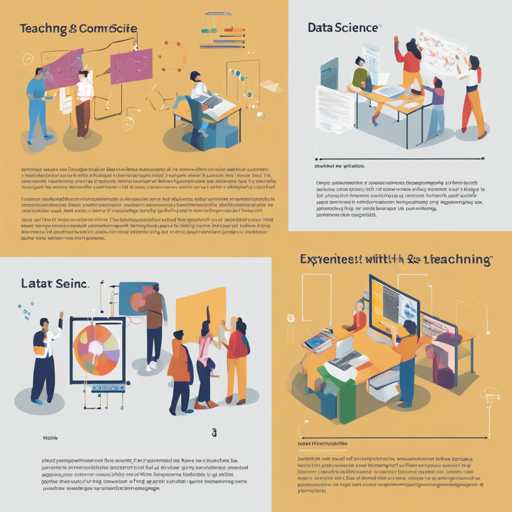Welcome to your go-to guide for teaching data science, equipped with resources that leverage the power of LaTeX for creating dynamic and thorough course material. This blog will walk you through how to effectively utilize Beamer slides for presentations and two-column notes, plus it will share insights on contributing to this shared knowledge base. Let’s dive in!
Understanding the Structure
Imagine you’re building a library of knowledge; each section is like a book that focuses on a specific topic in data science, such as Python programming, Machine Learning, Deep Learning, and Natural Language Processing. The repository is structured to help you compile and arrange these “books” neatly.
- LaTeX Directory: This is where your “books” are stored. Each book represents a subject and is named logically, such as maths_linearalgebra_matrices.tex.
- Code Directory: Here, you’ll find active Python or IPython notebooks that involve running code and have associated images and data.
- References Directory: Although this isn’t uploaded, think of it as your citation manager. It holds the seed materials needed to enrich your content.
Code Arrangement
To organize your course content effectively:
- Use a clear and systematic naming convention to keep tabs on each topic and corresponding content.
- Utilize the main driver files designated for seminars, workshops, and courses, which will invoke common content files.
- Create .bat files if you prefer a quick compilation method, especially if you are less familiar with LaTeX commands.
Installation Requirements
Before you get started, ensure you have the following:
- LaTeX: Ensure you have MikTeX 2.9 installed on a Windows 7 (64-bit) system.
- LaTeX Packages: Be prepared to install any additional packages as prompted.
- TexWorks IDE: Utilizing this can streamline your LaTeX coding experience.
How to Run LaTeX
Now that you are all set up, here’s how to run your LaTeX files:
- Locate the driver files named Main_WorkshopSeminar_course_CheatSheetPresentation.tex.
- These driver files utilize core content files which bring everything together. Running these will compile your course notes into two formats: presentations and cheat sheets.
- For simplicity, use the make.bat command to compile your course of choice. Customize this as needed based on your operating system.
- If you prefer a personalized approach, feel free to create your own main files and incorporate relevant content files.
How to Contribute
Joining the community is a great way to enrich this growing repository:
- Navigate to the LaTeX folder.
- Contribute material by copying your images into the images folder and source code into the src folder.
- Utilize the sample files as templates – modify them as required to include your unique content.
Troubleshooting
Should you encounter issues during installation or compilation, consider the following:
- Double-check if all required LaTeX packages are installed.
- Ensure that file paths and filenames are correct and linked properly.
- If you’re experiencing consistent errors, consult forums or communities for support.
For more insights, updates, or to collaborate on AI development projects, stay connected with fxis.ai.
Final Thoughts
At fxis.ai, we believe that such advancements are crucial for the future of AI, as they enable more comprehensive and effective solutions. Our team is continually exploring new methodologies to push the envelope in artificial intelligence, ensuring that our clients benefit from the latest technological innovations.

